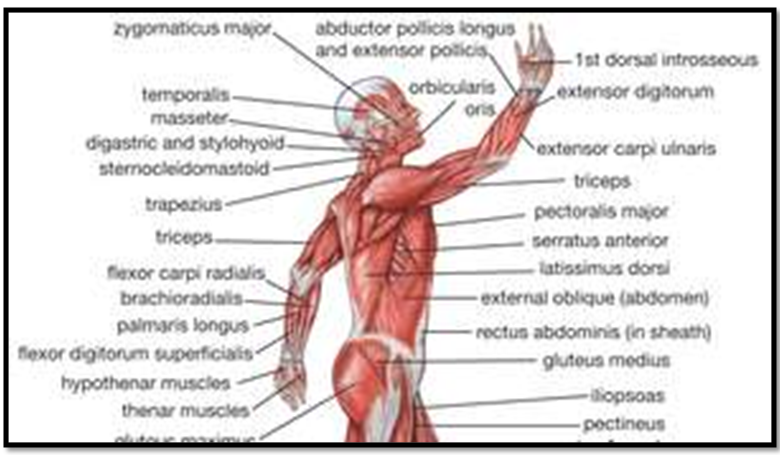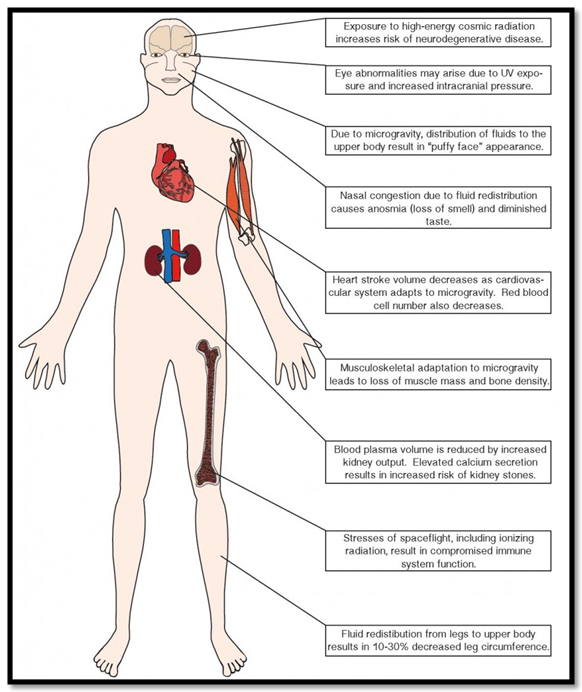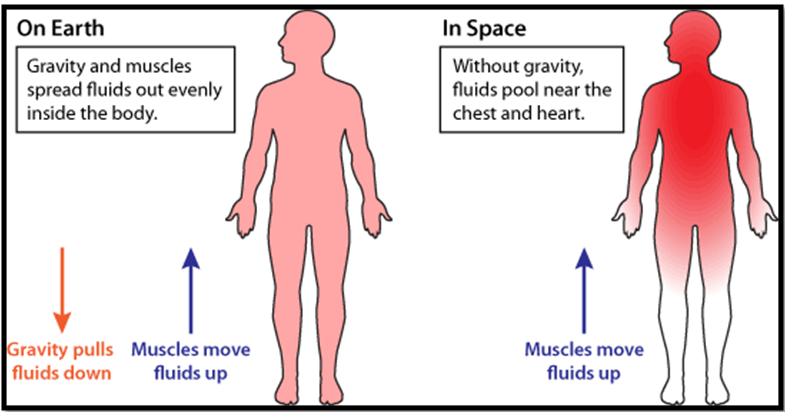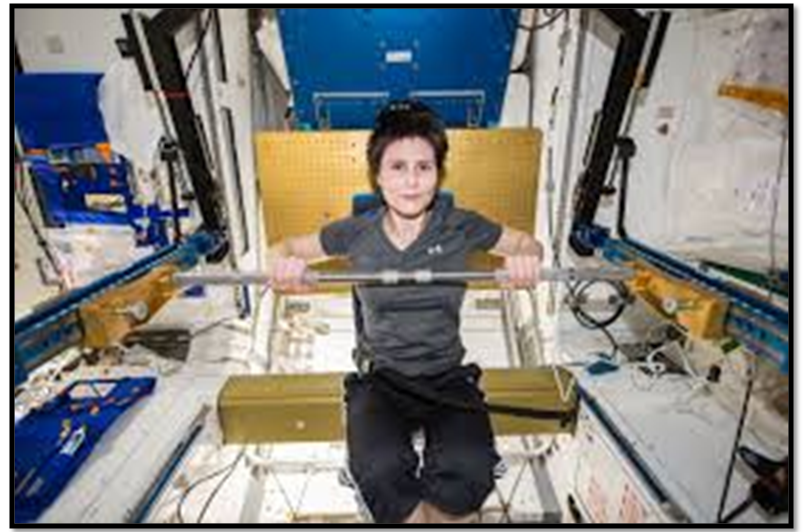Assignment Sample on PA7051 Muscles in Space
Introduction
Thesis statement for this study includes to assess effect of microgravity on human muscles that can provide information about physiological changes beyond earth surface. Human exploration is required over robotic exploration as it is helpful to acquire scientific knowledge for inspiring all the people around the globe regarding modern innovations. ISECG (The International Space Exploration Coordination Group) suggests that scientific exploration requires human to incorporate better knowledge about circulation of economy for living under limited resources. Astronauts have experienced near about 20% muscle loss in case of long duration space mission and strength of muscle has hampered for spending five to eleven days in spaceflights.
Main Body
General overview of human muscle
The soft tissue in most animals is skinmuscle and a lot of important body functions are related with human muscle. Muscle cells include actin and myosin protein fibres which slide over each other to produce a contraction that affects both the length of the cell and its form. This organ systems work to create strength and movement for human being by maintain forces and motions (Clément, 2005).

Figure 1: Muscular system in human
(Source: Clément, 2005)
Muscles make a human running, speaking and kicking possible for accomplishing all the functionalities in a measurable way. They are responsible for heartbeat, respiration and digestion. The musculoskeletal system is however dependent on other apparently unrelated tasks, such as temperature control, vision as well as pumping of blood can be considered as another secondary function (Clément, 2005). Continue to learn about the skeletal muscles and how it regulates the body can help to understand tissue conductivity context for better purpose.
Significance of space mission
Global Exploration Roadmap evaluates different types of strategies acquire by human to expand their mission for travelling in Mars, Moon and other asteroids of solar system. Reliable transportation as well as habitation is needed under advanced technology for understanding vicinity of lunar surface (Globalspaceexploration.org, 2013). International Space Station gathers information that analysis of current environmental condition of Moon, Mars and asteroids are beneficial to measure critical capabilities purposefully.

Figure 2: ISECG roadmap
(Source: Globalspaceexploration.org, 2013)
ISECG supports technological advancement for easy journey of astronauts from earth to other planets, satellites or asteroids. In order to do stress free journey for all, it is needed to live within strive as well as harsh condition. Contraction of muscle is responsible for lack of muscular activity and maintenance of such situation can be possible through correct introduction of strategies. Human mission beyond low earth orbit within 2030 cannot be acquired positively without developing deep scientific plans for minimising body parts related challenges (Globalspaceexploration.org, 2013). Therefore, exploration is needed readily for gaining knowledge about various issues and it can help to provide impact on successful space journey at any condition.
Effect on muscles while in space
Muscle and bone deterioration is a major fact to be considered for human while travelling in spaceflight. Usually, muscles are affected broadly due to excessive loss in body weight and mass has reduced at about 95% for spending 2 weeks in spaceflight. As of the reason of microgravity, skeletal muscle is not able to control posture as well as terrestrial locomotion for human (Sciencedaily.com, 2019). In addition, lack of functionalities of leg muscles makesthose inactive and near about 20% mass lose up is reported. Spending times in space has rapidly changed structure and function of muscle fibre due to lack of contraction in its parts. Slow-twitch endurance fibres become unable to do functionalities that in turn replaced by fast-twitch endurance fibres. As a result, heavy labour works cannot be performed by astronauts even after returning back to earth after some days.

Figure 3: Effects on muscle while in space
(Source: Sciencedaily.com, 2019)
Muscular volume and strength in muscle has changed rapidly in microgravity environment that usually occurs due to fluid shift. Extensor muscles are affected badly during space mission that in turn increases flight time as well as internal mass is reduced with high potency. Study refers that constant change in hydration level between earth surface and beyond it, is responsible for changing condition of muscle volume. Lack of discontinuity between upper body muscles and lower body muscles can be identified as another fact during spending time in spaceflight.Structure of muscle has hampered in order to spend more time in space and lack of relative use of type I and type II fibre can be considered as common example (Asme.org, 2017). Production of actin and myosin protein become lack within microgravity environment that offers minimum muscle contraction.
Throughout space-flight, skeletal muscles, especially lower extremity postural muscles, undergo atrophy and functional and structural changes. There are no pretty poorly interactions between exercises in space, muscle adjustments and efficiency. Steps must be taken to try to clarify the actual state of the success capability in and after flight and the safety objectives or target areas for the current flight practice programme (Gaoet al. 2018). Since the very inception of the aerospace human project, substantial and rational fears about the successful evolution to vacuum microgravity were articulated due to possible structural impacts on earth-adapted ways of life.
The discharge of muscle tissue both on the Earth by bedding and space travel tests will lead to muscle remodelling (atrophic response). Therefore, decreased force, fatigue power, executive function and cartilage consistency are observed in the skeleton. In comparison, there is a substantial reduction of the haemoglobin mass in myocardial and cardiovascular aspects that impact the skeletal muscle activity (Kyriacouet al. 2017). This natural adaptive response to microgravity can become a responsibility that raises the likelihood of difficulty or negative affect of biologically challenging tasks performed by crew members in extra-vehicle operation (EVA) or when returned to earth surface.
Causes
It is physically difficult to live and function in vacuum as most of the body parts are not functioning accurately. However, the lack of gravity allows it physically unfulfilling to operate in a spacecraft. On Earth, one must use those muscles continuously to combat the strength of gravity. These muscles, usually known as muscles against gravity, involve calf muscles, hamstrings and knees and ankles musculature. Even if explorers work in a weightless world, very little skeletal muscle is required to help or push their limbs. Human muscles degrade and disintegrate without daily use and fitness and this is an atrophy operation. Studies showed that explorers lose their lean muscle by up to 20% on spacecraft by spending 11 days around in space (Vico and Hargens, 2018).

Figure 4: Causes of muscle change in space
(Source: Van Ombergenet al. 2017)
Astronauts often lose muscular strength due to micro-gravity faster than they will on Earth without the right diet and workout regimen. Moreover, throughout the microgravity, the substances in the body move up to the brain, that can compress the pupils and create difficulties in visibility.A lack of muscle mass represents a reduction of power and can be particularly harmful if an astronaut is reintegrated into the Gravity field after a strenuous rescue operation (Van Ombergenet al. 2017). However, astronauts will restore muscle mass and force once they are back on earth, it is a matter of retaining muscles in space, associated with the long human spaceflight.
Evidences
Bouncing motions are the favoured methods on planetary neighbours Mars and Moon. The muscle activation process during bouncement is defined by the muscle period. Research identified improvements in the flex interval based on gravity in the film and musculoskeletal features (Baileyet al. 2018). Thus, lunar, martian and earth momentum measured neuromuscular regulation of limb Muscles, along with association between pre-activation tissue, reflective elements, and strength performance.Findings stress that biomechanically related films were followed by neural regulation modifications in reaction to gravity variance. Gravity difference is predicted by gravitational force muscle activity and accounted for this.
Besides the lunar properties and moon speed, Mars and Earth velocity, the human physical motions and also the usual engine sequence synopsis during bounces. Beyond the change of gravity and stress profiles expressed in great strength, the vertebral adventures on the low ends before and after touchdown are similar (Smith, 2018). Significant features of a pre-contracted hamstring tendering matrix were illustrated in subjects and accompanied by a neuromuscular upgrade at trajectory. In addition, the strength of muscle activity was calibrated to the necessary longitudinal circumstances.
It seems that before motor activity the degree of gravity can be expected even before redemption muscle strength showed adjustments that indicate reduction in stimulation intensity. The CNS probably precisely forecasts the moment and speed of the muscle stretch, dependent on vestibular feedback, until eventual touchdown (Tomilovskayaet al. 2019). Subject matters therefore thrive from the benefits of the tactile capability to “smooth” motion and recover from prelanding, supraspinal muscle activity in order to deal with electric and magnetic and prevent injury.
Remedy
Physical activity to improve bone burden and muscle training can also be included in the everyday life of a human. Many that are highly at risk of fracture should use drugs to reduce cause mortality. The secrets of promoting the welfare of astronauts learned from spatial medicine are now intended to be used to protect and provide promotion about the physic and training of the elderly. The members of the crew practice two and a half hours daily aerobic workouts six days a week (15 hours a week). However, physical fitness can really remove the dangers associated with those issues entirely (Scottet al. 2020).Intensive preparation, particularly strong workouts, combination with an appropriate diet, minimizes muscle atrophy in room.

Figure 5: Exercise to get remedy from muscle problems
(Source: Nasa.gov, 2021)
Resistive and grip exercises can be recommended to astronauts to get quick remedy from muscle related problems during space journey. Strong grip is a prominent indicator of overall health and it helps to increase activity of slow-twitch endurance with proper contraction of muscle fibres.Enhancing the muscles will avoid certain typical accidents, regardless of whether you do action sports or merely perform repeat exercises such as some workout in the gym. At any consequence ifone accidentally become injured, stronger muscles seem to heal even more quickly (Langet al. 2017). Research has determined that the strength of grip is a measure of total muscle stamina. Further tests have demonstrated that a tighter grip has a decreased chance of heart and stroke. Therefore, this can help the crew of spaceflight to manage body functionalities without any additional hamper.
Interim Resistive Exercise Device (iRED) is a modern implementation that can be opportunistic to provide better training for astronauts regarding easy adaptation in microgravity environment.A collection of 16 flex-packs, lined up vertically, are provided by the Interim Resistive Exercise Variance (iRED) for endurance training of microgravity staff. The greatest advantage about using SpiraFlex systems on Earth is that people can gain the same weight lifting advantages without having to weigh excessively onerous weights and associated equipment (Demontiset al. 2017). Lessons and inventions proven on the ground will contribute on orbital and on Earth to healthy lives.
Advanced Resistive Exercise Device is another device suggested by NASA to improve muscle related problems for human travelling in space. Balancing between increasing and decreasing of mechanical strength of body can be monitored by doing exercise with the help of this device. The ARED is able to practice all the big muscle classes, working on jumps, dead elevators and rises of calves, and allows the crew to retain their stamina and endurance (Nasa.gov, 2021).Intense workouts are zero gravity environment can be supported by such equipment and remedy regarding muscle problems can be acquired proficiently.
Conclusion
Thesis statement has justified throughout the essay as evidence supports that volume and strength of muscle change drastically to travel via spaceflight. It is significant to provide information about impact of microgravity on different internal body organs of human. Besides that, mass of the muscles has modified during space journey for an individual. Change in muscle structure is responsible for minimum contraction of this organ that in turn support easy movement of bodies in weightless environment. Astronauts are unable to perform normal exercise beyond earth environment and it is one of the major reasons for atrophy. Usually, physical exercise for fifteen hours per week can be suggested for astronauts to manage issues like muscle loss while passing through orbit. In addition, adequate diet is another way to overcome consequences related with muscle problems faced by astronautsdue to reduced gravity condition.
References
Bailey, J.F., Miller, S.L., Khieu, K., O’Neill, C.W., Healey, R.M., Coughlin, D.G., Sayson, J.V., Chang, D.G., Hargens, A.R. and Lotz, J.C., 2018. From the international space station to the clinic: how prolonged unloading may disrupt lumbar spine stability. The Spine Journal, 18(1), pp.7-14.
Clément, G., 2005, Fundamentals of Space Medicine, Chapter 5, (1st ed.)- an Ebook you can access via the Library’s online system.
Demontis, G.C., Germani, M.M., Caiani, E.G., Barravecchia, I., Passino, C. and Angeloni, D., 2017. Human pathophysiological adaptations to the space environment. Frontiers in physiology, 8, p.547.
Gao, Y., Arfat, Y., Wang, H. and Goswami, N., 2018. Muscle atrophy induced by mechanical unloading: mechanisms and potential countermeasures. Frontiers in physiology, 9, p.235.
Kyriacou, M.C., De Pascale, S., Kyratzis, A. and Rouphael, Y., 2017. Microgreens as a component of space life support systems: A cornucopia of functional food. Frontiers in plant science, 8, p.1587.
Lang, T., Van Loon, J.J., Bloomfield, S., Vico, L., Chopard, A., Rittweger, J., Kyparos, A., Blottner, D., Vuori, I., Gerzer, R. and Cavanagh, P.R., 2017. Towards human exploration of space: the THESEUS review series on muscle and bone research priorities. npj Microgravity, 3(1), pp.1-10.
Scott, J.M., Downs, M., Buxton, R., Goetchius, E., Crowell, B., Ploutz-Snyder, R., Hackney, K.J., Ryder, J., English, K. and Ploutz-Snyder, L.L., 2020. Disuse-Induced Muscle Loss and Rehabilitation: The National Aeronautics and Space Administration Bed Rest Study. Critical care explorations, 2(12).
Smith, J.K., 2018. IL-6 and the dysregulation of immune, bone, muscle, and metabolic homeostasis during spaceflight. npj Microgravity, 4(1), pp.1-8.
Tomilovskaya, E., Shigueva, T., Sayenko, D., Rukavishnikov, I. and Kozlovskaya, I., 2019. Dry immersion as a ground-based model of microgravity physiological effects. Frontiers in physiology, 10, p.284.
Van Ombergen, A., Demertzi, A., Tomilovskaya, E., Jeurissen, B., Sijbers, J., Kozlovskaya, I.B., Parizel, P.M., Van de Heyning, P.H., Sunaert, S., Laureys, S. and Wuyts, F.L., 2017. The effect of spaceflight and microgravity on the human brain. Journal of neurology, 264(1), pp.18-22.
Vico, L. and Hargens, A., 2018. Skeletal changes during and after spaceflight. Nature Reviews Rheumatology, 14(4), p.229.
Websites
Asme.org, 2017. Study Targets the Effects of Space Travel on Muscles. Available at: https://www.asme.org/topics-resources/content/study-targets-effects-space-travel-muscles. [Accessed on: 3rd March, 2021]
Globalspaceexploration.org, 2013. The Global Exploration Roadmap. Available at: https://www.globalspaceexploration.org/wordpress/wp content/uploads/2013/10/GER_2013.pdf. [Accessed on: 3rd March, 2021]
Nasa.gov, 2021. Bone and Muscle Loss in Microgravity. Available at: https://www.nasa.gov/mission_pages/station/research/station-science-101/bone-muscle-loss-in-microgravity/. [Accessed on: 3rd March, 2021]

